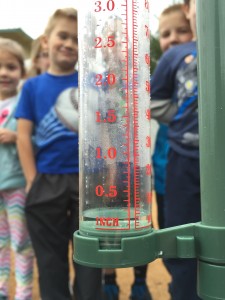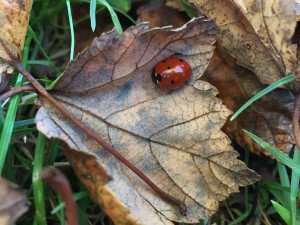 Although the new year is already several weeks old, I have a resolution you might want to consider: Contribute to scientific endeavors around the world with your students. While this may sound a bit more ambitious than hitting the gym more often or eating healthier, but it’s easier than you might think, thanks to citizen science. Citizen science is the systematic collection of data by non-professional scientists for analysis by professional scientists. The idea of lay people contributing to meaningful science may be an unfamiliar concept to many, but history is full of citizen scientists, from backyard astronomers to vacationing zoologists. Thanks to the Internet, citizen science is a viable way for researchers to collect a sizable data set from diverse locations quickly and efficiently. In fact, regardless of grade or subject, you can easily help your students contribute to meaningful science as soon as tomorrow!
Although the new year is already several weeks old, I have a resolution you might want to consider: Contribute to scientific endeavors around the world with your students. While this may sound a bit more ambitious than hitting the gym more often or eating healthier, but it’s easier than you might think, thanks to citizen science. Citizen science is the systematic collection of data by non-professional scientists for analysis by professional scientists. The idea of lay people contributing to meaningful science may be an unfamiliar concept to many, but history is full of citizen scientists, from backyard astronomers to vacationing zoologists. Thanks to the Internet, citizen science is a viable way for researchers to collect a sizable data set from diverse locations quickly and efficiently. In fact, regardless of grade or subject, you can easily help your students contribute to meaningful science as soon as tomorrow!
My own adventures in citizen science came about for a variety of reasons. Prior to teaching, a degree in botany allowed me to work as a field biologist collecting data for fire ecology, fisheries, hawk surveys, and rare plant inventories, so even with my kindergarteners I enjoy sharing my personal interest in science on a regular basis. Additionally, I am lucky to teach at a school adjacent to a redwood forest, complete with nature trail, allowing my students to benefit from weekly hands-on experiences with the natural world. Equally important, I view participation in citizen science as a real-world way to meet several Next Generation Science Standards, including data collection, analysis, and presenting findings. Additionally, meeting Performance Expectations across all grade-levels are also possible through citizen science, from weather observation (kindergarten) to geology (grade 4), and ecosystems (middle school) to natural selection (high school).
Here are five projects to check out, suitable for all grade levels, if you are considering making citizen science part of your new year in the classroom:
Set up a feeder (any feeder) and make observations of bird species and numbers to help the Cornell Lab of Ornithology add to their impressive data set on overwintering bird species distribution. Identification posters and a calendar to log observations are included with the nominal registration fee.
Community Collaborative Rain, Hail and Snow Network (CoCoRaHS)
This volunteer, non-profit group, originally created by the Colorado State University, aims to make real-time precipitation data available for use by the National Weather Service, as well as other research institutions. It’s as easy as setting up a high-capacity 4” rain gauge and logging results online a few times per week.
Did you you feel that? Whether you live in an earthquake-prone region or not, your classroom can contribute to seismic data collected by CalTech (the project was formerly run by Stanford) using an easy to set up sensor. Make sure to check out the world map on their site for locations of all participating classrooms and recent quake activity.
Find a ladybug on the playground? Take a picture, upload it to the Lost Ladybug Project website, and they will continue their work to track the distribution of the world’s most beloved beetle. What a great companion project to almost any unit or lab relating to insects!
Chances are, there are at least a few flowering trees or shrubs at (or near) your school campus. If so, making regular, or even one-time, observations of plants for the arrival of buds, leaves, flowers, fruit, and leaf color change will contribute to valuable ecological data. This haiku on their website provides a succinct description:
People watching plants
Contributing to research
Join Project BudBurst
So grab your class and a few clipboards and head outside to collect some real data with the most authentic of all audiences – the global scientific community! You’re likely to discover that both you and your students will begin to take an interest in these citizen science projects as if they are your own, which in a sense is true. And who knows, maybe this will be one resolution that becomes a worthwhile habit.

